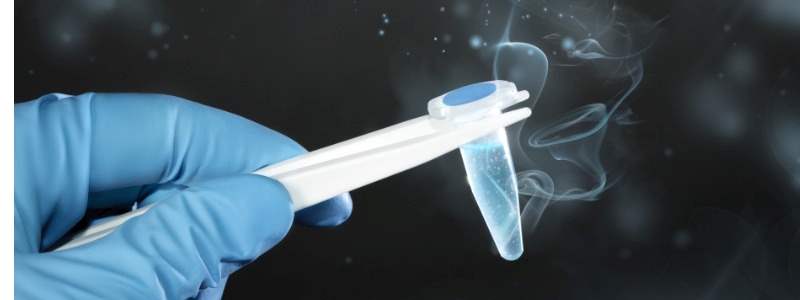Recent research has revealed that it may be possible to delay the implantation of an embryo into the endometrium (uterus lining). This could have implications for the future of IVF treatment, as it would mean that embryos would not have to be frozen; avoiding freezing could lead to better survival of embryos.
Scientists have long known that delayed implantation occurs in around 100 species of mammal, to ensure that offspring are born into the appropriate conditions for their survival. Obligate diapause is when implantation is delayed by environmental factors (found in bears, deer and skunk among others), while facultative diapause is triggered by lactation to avoid having 2 litters close together (used by mice). The foetuses in these situations do not immediately implant in the uterus wall but remain in a state of dormancy within the uterus, with development suspended.
Little has been known about the mechanisms of this process until recently, when Professor Jonathan Van Blerkom and colleagues from the University of Colorado looked into the process and its application to humans. They discovered that ATP is the key to delayed implantation. ATP is a molecule which transports energy within the cell. When ATP is turned into ADP and phosphate, the phosphate is used to phosphorylate enzymes that drive development, and when ADP is combined with phosphate to make ATP, this stops development. When scientists looked at ADP and phosphate in mice embryos, the levels were lower in embryos in the delayed state than in the ones that were about to implant. Following this discovery, Professor Van Blerkom and his team searched for a possible metabolic pathway to target in this process, and found that the AMPK pathway was a good candidate. Inhibiting the AMPK pathway in a mouse blastocyst resulted in greater ATP production and the cessation of DNA synthesis, while re-starting the pathway meant that the embryos started to develop again. The AMPK pathway therefore mimics delayed implantation.
Knowing that the AMPK pathway is expressed in humans as well as mice, the scientific team decided to use the same mechanisms in human embryos. Inhibiting the pathway resulted in the embryos staying in suspended development for 4 days, with ATP levels dropping to 30% of original levels. Another manifestation of delayed implantation was that the gangliocytes (cells which recognise the uterus lining for implantation), started to disappear. Once the team stopped inhibiting the pathway, development resumed, ATP levels rose and gangliocytes began to grow again within 40 minutes.
These findings could have important implications for IVF treatment. If embryos could be put into a state of suspended development, this would negate the need for the freezing and thawing process which can be deleterious to the survival of embryos. These studies have also revealed some interesting properties of embryos; information which could be used to improve IVF treatment in the future. For example, that there is a surface protein called GMI that is used for implantation, which could be used as a marker for implantation competence, and that oxygen levels of 2% were optimum for maintaining the embryos.






